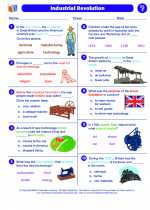Industrial Revolution
The Industrial Revolution was a period of major economic and technological change that began in Great Britain in the late 18th century and spread throughout the world. It marked a shift from agrarian and handicraft economies to industrial and machine-based production.
Causes of the Industrial Revolution
- Rapid population growth
- Technological advancements in agriculture
- Expansion of trade and commerce
- Access to natural resources and raw materials
- Development of transportation networks
Effects of the Industrial Revolution
- Rise of factories and mass production
- Growth of urbanization and migration to cities
- Changes in social and economic classes
- Technological innovations and inventions
- Impact on the environment and labor conditions
Key Inventions and Innovations
During the Industrial Revolution, there were several key inventions and innovations that contributed to the transformation of society and the economy:
- Steam engine
- Spinning jenny
- Power loom
- Telegraph and communication technologies
- Railways and transportation systems
Impact on Society and Work
The Industrial Revolution brought about significant changes in the way people lived and worked:
- Shift from rural agricultural lifestyles to urban industrial living
- Creation of new jobs in factories and industries
- Formation of labor unions and worker movements
- Changes in family dynamics and gender roles
Study Guide
Here are some key points to focus on when studying the Industrial Revolution:
- Understand the causes and factors that led to the Industrial Revolution.
- Identify and explain the major technological advancements and inventions of the era.
- Analyze the social, economic, and environmental impacts of the Industrial Revolution.
- Examine the changes in labor conditions and the rise of industrial capitalism.
- Explore the global spread and long-term effects of the Industrial Revolution.
By understanding the historical significance of the Industrial Revolution, you can gain valuable insights into the modern world and its economic, social, and technological development.
[Industrial Revolution] Related Worksheets and Study Guides:
.◂Social Studies Worksheets and Study Guides Sixth Grade. Industrial Revolution
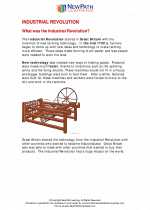
 Worksheet/Answer key
Worksheet/Answer key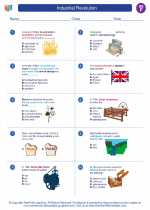
 Worksheet/Answer key
Worksheet/Answer key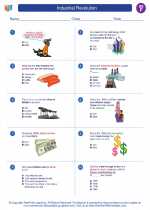
 Worksheet/Answer key
Worksheet/Answer key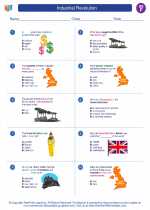
 Worksheet/Answer key
Worksheet/Answer key